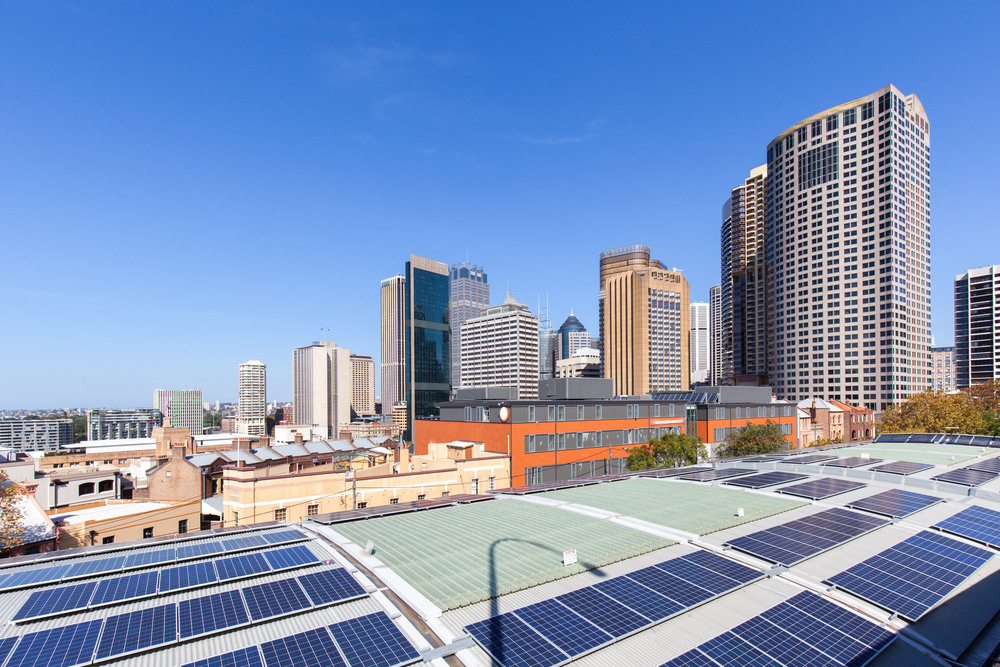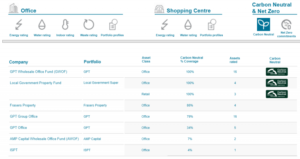
The NABERS Sustainable Portfolios Index (SPI) for 2021, Australia’s first publicly available index showcasing the proven environmental performance of the top 43 building portfolios and funds across the country, has just been published.
Investors in the property sector are placing increased importance on mitigation of climate risks in buildings. This has been brought into sharper focus following a year of unprecedented global challenges in 2020 which also affected the commercial property sector.
The NABERS SPI, now in its third edition, is globally unique in that it provides a public, whole portfolio view of actual performance in terms of emissions, water usage, waste and indoor environment quality. It also tracks progress over time.
The SPI provides comparative business intelligence on where property portfolios stand against their peers. The Index covers office buildings, shopping centres and this year, for the first time, also showcases building portfolios that have achieved 100 per cent carbon neutrality.
Director of NABERS, Carlos Flores, said they are hugely encouraged by the results.
“Despite the unparalleled challenges of the last year, we’ve seen these organisations double down on their sustainability efforts and continue their many years of hard work to help the environment,” Mr Flores said.
“We also saw a 13 per cent increase in property portfolios disclosing in the SPI, spearheaded by a 27 per cent increase in funds disclosing their portfolio NABERS Indoor Environment performance. This upward trend despite the circumstances highlights how important sustainability has become for Australian businesses, as well as the central role health and wellbeing will likely play going forward.”
This year’s Index also showcases two pioneering property portfolios that have achieved full carbon neutrality: Local Government Super’s (LGS) Local Government Property Fund and The GPT Group’s GPT Wholesale Office Fund (GWOF).
LGS Head of Property, Scott Armstrong, said they are extremely proud that their local government property fund is now certified carbon neutral under the Australian Government’s Climate Active Carbon Neutral Standard.
“We hope this achievement will demonstrate to our members and the wider community that it is possible to effectively reduce emissions and offset our impact on the environment through targeted action,” he said.
As the largest carbon-neutral portfolio to feature on the Sustainable Portfolios Index 2021, Chief Operating Officer of The GPT Group, Mark Fookes, said: “The property sector in Australia has been a global leader in sustainable building design and operations, and moving to carbon-neutral well before many other industries will only further demonstrate this leadership position.”
“As an ‘early mover’ in acting on greenhouse gas emissions, GPT has been implementing actions to reduce energy consumption across all of our assets.”
“We are incredibly proud of the ground-breaking work done by our team to achieve 100 per cent carbon neutrality for all operating assets within the GPT Wholesale Office Fund, and we’re pleased to see this celebrated in the NABERS SPI,” Mr Fookes said.

Portfolios reaching Carbon Neutral.
The SPI 2021 also highlights portfolios that have set public targets to achieve net-zero emissions. This year notable schemes include the Net Zero Momentum Tracker, the Green Building Council of Australia (GBCA) and World Green Building Council’s Net Zero Carbon Buildings Commitment, and the Science-Based Targets Initiative. These public commitments are bridging the gap between intention and action.
Key sustainability finance players also see the NABERS SPI as an important source of information for mobilising capital investment in low-carbon assets and technology. For instance, NABERS portfolio ratings are used as the benchmark for banks providing sustainability linked loans.
Sebastian Loewensteijn, the Associate Director of Sustainability at the Clean Energy Finance Corporation (CEFC), said it is becoming increasingly important that portfolios demonstrate a commitment to a climate transition in order to access green funding.
“Portfolios that can demonstrate commitment to emissions reductions, and prove actual emissions reductions will have the upper hand, and NABERS ratings provide a way to prove this for property portfolios,” Mr Loewensteijn commented.
NABERS ratings also have a proven relationship with more financially resilient portfolios.
Anthony De Francesco, Managing Director of Real Investment Analytics (RIA), an independent data analytical consulting firm, added: “There continues to be a strong positive relationship between a high NABERS rating and enhanced investment performance for office property assets. In an ever-changing market, visibility of sustainability credentials and transparent greening of buildings will continue to be regarded as a key investment performance attribute.”
The NABERS Sustainable Portfolios Index 2021 can be found here.











